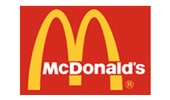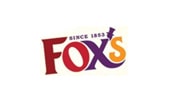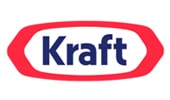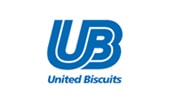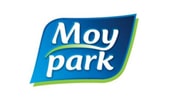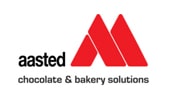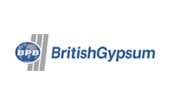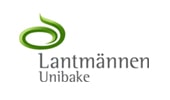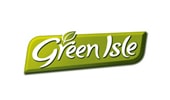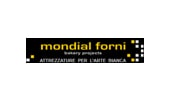Heat Transfer Terms and Definitions
Heat is the amount of energy moved across a thermodynamic barrier, and is measured in Joules (J).
Heat transfer is the rate at which energy moves across the thermodynamic barrier, measured in Watts (W), that is, Joules per second. Heat transfer occurs in three different modes, conduction, convection, and radiation.
Heat flux is the rate of energy transfer per unit area, expressed in W/m?, W/cm?, or similar units. Heat flux can be positive or negative, depending on the direction of heat transfer.
Temperature is a fundamental property that indicates the internal energy of matter. Any temperature scale (Celsius, Fahrenheit, etc.) may be used as long as the units are kept consistent.
Conduction is a mode of heat transfer through a substance, either solid or fluid, on a molecular level as a result of a temperature gradient being present.
Convection is a mode of heat transfer when there is fluid flow. As in conduction, a temperature gradient must be present, but convection is influenced by fluid flow, which alters the temperature gradient.
Radiation is a mode of heat transfer that occurs via electromagnetic radiation, and does not require any transport medium or material.
Emissivity is the ratio of the actual energy emitted by a real body to that emitted by a blackbody. Emissivity can be considered equal to absorptivity for a gray body; that is a body whose emissivity is independent of wavelength and which reflects radiation in a diffuse manner. Most objects can be reasonably approximated as gray bodies.
A thermocouple is used to measure temperature. It consists of a pair of junctions between two different metals that will produce a voltage proportional to the temperature difference between the junctions of the wires due to the Seebeck effect. Commercially available thermocouples will appear to have only one junction; the second junction is essentially where the two leads are connected to a voltmeter or electronic thermometer. For a thermocouple to give an accurate reading the second junction must be at a reference temperature; frequently this is taken to be room temperature. For more accurate measurements, the second junction is lowered to a known temperature, such as the ice point.
A thermopile is an array of thermocouples. By connecting many thermocouples in series, the temperature sensitivity is increased, because the thermocouple voltages add when linked in series. Like a thermocouple, the thermopile reads the temperature difference between two points. For a heat flux transducer, these two points are the top and bottom layers of the thermopile.
Humidity Terms and Definitions
Many terms specific to humidity are derived from the ancient Greek words hydor (water), hygros (wet) and also psychros (cold).
Meanings of general terms relevant to humidity:
Absorption (of water vapour) – retention (of water vapour) by penetration into the bulk of a material
Adsorption (of water vapour) – retention (of water vapour) as a surface layer on a material
Condensate – condensed material, e.g. liquid water or ice
Desorption – release of adsorbed or absorbed substance
Desiccant – any substance which exerts a drying action by chemically absorbing water vapour
Dry-bulb temperature – measured air temperature, usually paired with a “web-bulb” temperature to derive a value of relative humidity.
Humidity – the presence of water vapour in air or other gas. Some people use “humidity” to mean relative humidity only. Strictly speaking, “humidity” also refers to all kinds of absolute indications of humidity. For very low humidities, other more specific terms tend to be used.
Hygrometer – any instrument for measuring humidity
Hygrometry – the subject of humidity measurement
Hygroscopic – tending to absorb water vapour
Inert gas – chemically nonreactive gas, such as nitrogen, helium, argon, etc.
Moisture – commonly used to refer to liquid water or water vapour in any form, “moisture” is also the term particularly used to mean water that is absorbed or bound into any material
Probe – the part of an instrument that houses the sensor remotely from the main body of the instrument, e.g. at the end of a connecting electrical lead. In some situations the word “probe may be used to refer to an entire hygrometer. Also loosely used interchangeably with “sensor” and “transmitter”. “Probe” may also refer to a tube used to extract gas for measurement.
Sensor- the active or sensing part of a measuring instrument. There are some cases where a whole hygrometer is referred to as a “sensor”. Also loosely used interchangeably with “probe” and “transmitter”.
Transmitter – Instrument which normally gives an electrical output (analogue or digital) rather than a displayed result. The sensing head may be an integral part of the transmitter or may be connected via an external cable. Also loosely used interchangeably with “probe” and “sensor”.
Wet-bulb temperature – temperature indicated by a thermometer sheathed in wet wicking, and influenced by the rate of evaporation from the wicking. Usually paired with a “dry-bulb” temperature to derive a value of relative humidity.
Definitions of measured quantities
Many of the following definitions are based on those in the British Standard BS 1339: 1965 (confirmed 1981, under revision in 1996), “Definitions, formulae and constants relating to the humidity of the air”. As given below, the definitions are explanatory rather than rigorous. For rigorous definitions, BS 1339 or other definitive documents should be consulted. In practice, the usage of some terms varies according to the context: for example the terms in the field of air-conditioning are sometimes different from the terms used in meteorology for the same quantities. In each case a preferred term is given below, but qualifying notes indicate where there are common alternatives in use.
Unites of measurement for expressing the quantities are given, and may have alternative forms, e.g. “grams per cubic metre” is given by “ g m-3”, alternatively written “g/m3”.
Formulae inter-relating some of these quantities are given in Section 10 (Tables, charts and formulae).
Absolute humidity – The mass of water vapour present in unit volume of moist air of a given temperature and pressure. SI (metric) units are grams of water per cubic metre of air (g m-3). Older references may be in terms of pounds per million cubic feet (lb ft-6) or in grains per cubic foot
(gr ft-1). (One grain ? 0.0648 gram.).
Note: In chemical engineering the preferred term for this concept is “volumetric absolute humidity”, while “absolute humidity” is used to denote the quantity referred to in this document as “mixing ratio”. In meteorology the preferred term is “vapour concentration”. Other terms such as “vapour density”, “mass concentration” and “moisture content by volume” are also sometimes used to mean the same thing.
Usage: It is important not to confuse the particular quantity “absolute humidity” with the general category of “absolute measurements of humidity”.
Dew point (or dew-point temperature) – the temperature at which dew, or condensation, forms, on cooling a gas. This is, in effect, the temperature at which air becomes saturated in equilibrium with water. Expressed in degrees Celsius (°C) or occasionally in other units of temperature (e.g. in degrees Fahrenheit (°F) in USA). See also frost point.
Usage: When used as a noun, the two-word expression is not hyphenated:
e.g. “… a dew point of 10 °C …” “… dew points between -10 °C and 0 °C …”
When used as a modifier, or adjective, the expression has a hyphen:
e.g. “… dew-point hygrometer …”
Usage as a single word is also widely accepted (in either context):
e.g. “… dewpoint of 10 °C …” “ … dewpoint hygrometer …”
Negative dew points, with respect to supercooled water below 0 °C, are always shown with a minus (-) sign. Where there is any risk of ambiguity, a plus (+) sign may also be used for for positive dew points: e.g. “ … a range of dew points between -5 °C and +5 °C … “
The term “dew point” is often used generally to include “frost point” (see below). However in the range just below 0 °C, where either frost or dew (supercooled water ) can form, the values of dew point and frost point differ.
The use of initials (e.g. “dp”) is not a recognised abbreviation, but it occurs widely, and is used to distinguish clearly between dew-point temperatures and other values of (air) temperature. For example a dew point value might be expressed in the form “… 1- °C dp …”
Enthalpy (of humid gas) - Measure of the total energy in a humid gas. Enthalpy is a function of the gas temperature and pressure, and of the moisture content, since water absorbs energy on changing from condensed state to vapour. Enthalpy is a useful concept in air conditioning, where it is important to know how much of the "stored" energy will be consumed, or released, when the temperature or water content is raised, or lowered. Enthalpy of a gas can be defined as the sum of "sensible" and "latent" heat for each component in the gas. (See below for definitions of sensible heat and latent heat.) Values of enthalpy are conventionally expressed relative to a datum point (i.e. a zero or base line). For a dry gas, this is normally the heat content at 0 °C. For water vapour, the enthalpy is usually expressed relative to the heat content of liquid water at 0.01 °C. Expressed in terms of energy per quantity of dry gas, i.e. kilojoules per kilogram (kJ kg'1) (or other units, for example British thermal units per pound, Btu/lb).
Equilibrium relative humidity (ERH) (over a substance) - The value of relative humidity of the air at which there is no net exchange of moisture with any nearby substance. This is used for indirectly indicating or controlling the condition of moisture-sensitive substances such as paper. Expressed as a percentage (%). (See also water activity.)
Frost point (or frost-point temperature) - The temperature at which frost forms on cooling a gas. This is, in effect, the temperature at which air is saturated in equilibrium with ice. It is the exact counterpart to dew point (though values differ). Expressed in degrees Celsius, °C, or occasionally in other units of temperature, i.e. in degrees Fahrenheit (°F), in USA. (See also dew point.)
Humidity ratio - Mixing ratio
Latent heat - Heat stored in a substance but not directly related to its temperature. For example, heat is stored in a gas because this heat was originally supplied to evaporate it. "Latent" means "hidden". Expressed in energy per unit mass of substance, i.e. joules per kilogram (J kg"1). (See also enthalpy, sensible heat.)
Mixing ratio - Mass of water vapour per unit mass of dry air with which it is associated. It is a dimensionless ratio, but is often expressed in grams of water per kilogram of dry gas (g kg"1) or in other units of mass.
For low levels of moisture content, this may be expressed in parts per million by weight, i.e. mass of water vapour per million parts mass of dry gas (ppmw or ppm(w)).
NOTE: In chemical engineering this quantity is normally termed "absolute humidity" - but must not be confused with the definition of "absolute humidity" given above. Mixing ratio is also alternatively known as "humidity ratio".
Moisture content - A humidity term best reserved for general descriptive or qualitative use only. Use of this term to identify a measured quantity should be avoided, as there is a risk of confusion because "moisture content" has been used in the past to mean both mixing ratio and specific humidity. Moisture content is also a term particularly used to refer to the proportion of water held in liquids or solids.
Mole - Amount of substance which contains as many elementary entities as there are atoms in 12 grams of carbon 12. Expressed in moles (symbol, mol).
NOTE: When the mole is used, the elementary entities must be specified as atoms, molecules, etc.
Mole fraction - The mole fraction of a component is the ratio of the amount (number of moles) of that component to the total amount of substance present. Expressed as a dimensionless ratio.
Partial pressure (of water vapour) - The part of the overall pressure exerted by the water vapour component in a gas. Expressed in units of pressure such as pascals (Pa) or in multiples; kilopascals (kPa) or megapascals (MPa), with non-Si alternatives such as millibar (mbar) or millimetres of mercury (mmHg). 100 Pa = 1 mbar = 0.75 mmHg.
Parts per million - Abbreviated as "ppm", it must always be stated whether this is by mass (weight) or by volume, and whether the figure is the ratio of water vapour to dry gas, or to total (moist) gas.
Parts per million by volume (ppmv, ppm(v)) - Volume of water vapour per total volume of gas, for an ideal gas. Sometimes expressed relative to the total volume of moist gas (mole fraction times one million) or sometimes relative to the total dry gas. For small numbers of parts per million, the two are almost identical; at higher humidities they become significantly different.
Parts per million by weight, or mass (ppmw, ppm(w)) - Sometimes used to express the amount (mass) of water vapour relative to the total dry gas (mixing ratio times one million), but sometimes to express the amount relative to the total mo ist gas (specific humidity times one million). For small numbers of parts per million, the two are almost identical; at higher humidities they become significantly different.
Percentage saturation - The ratio of the actual mixing ratio to the saturation mixing ratio at the same temperature, expressed as a percentage (%).
NOTE. Under ordinary climatic conditions the percentage saturation is almost identical to the relative humidity.
Relative humidity - The ratio of the actual vapour pressure to the saturation vapour pressure over a plane liquid water surface at the same temperature, expressed as a percentage. This is commonly understood when the term "X percent relative humidity" is used.
USAGE: The phrase "relative humidity" is commonly abbreviated RH although this is not an a recognised abbreviation. Values of relative humidity are commonly expressed in units of percent relative humidity (%rh).
Care must be taken when expressing uncertainties, changes or fractional differences in relative humidity. For example, the difference between 50 %rh and 52 %rh is 2 %rh. This can also be expressed as a difference of 4% of value. It is important to distinguish clearly between these two kinds of statement.
Saturation vapour pressure (of water) - maximum pressure of water vapour that can exist at a given temperature. Expressed in units of pressure e.g. in pascals (Pa), or in non-Si units such as millibars (mbar) or millimetres of mercury (mm Hg).
Sensible heat (of a gas) - energy that resides in a gas according to its temperature. Expressed in terms of energy per mass of gas, e.g. in joules per kilogram (J kg '), or equivalent units. (See also enthalpy, latent heat.)
Specific humidity - mass of water vapour per unit mass of humid air. May be expressed as a dimensionless ratio, or in grams of water per kilograms of humid gas (g kg"1) or in kilograms per kilogram (kg kg"1)
Vapour pressure - that part of the total pressure contributed by the water vapour. Expressed in units of pressure e.g. in pascals (Pa), or in non-metric units such as millibars (mbar) or millimetres of mercury (mm Hg).
Water activity (of a substance) - Water activity (aw) is the relative humidity which is eventually reached in a closed space where a hygroscopic substance, such as a foodstuff, has been placed. It is the same as equilibrium relative humidity (ERH) except that it is expressed on a scale of 0 to 1 (no units), instead of 0% to 100%. Water activity is particularly used in connection with foodstuffs. (See also equilibrium relative humidity.)
*Source: A Guide to the Measurement of Humidity Nationa Physical Laboratory (NPL), The Institute of Measurement and Control, London, 1996
Temperature in the food industry
UK Department of Health Guidelines, Terms and Glossary:
Cook-Chill Process
Cook-Chill means a catering system based on the full cooking of food follow by fast chilling and storage in controlled low temperature conditions above freezing point (0°C to +3°C) and subsequent thorough reheating close to the consumer before consumption. It can take up to five days including the day of cooking but no longer as food quality diminishes (Department of Health, 1993).
Cook-Freeze Process
Cook-Freeze means a catering system based on full cooking followed by fast freezing storage. At controlled low temperature conditions well below freezing point (-18°C or below) and subsequent thorough reheating close to the consumer before prompt consumption (Department of Health, 1993).
Microorganism growth is minimised when food is stored at a maintained temperature below freezing point (Department of Health, 1993).
Food Storage Temperature and Life
The recommended Cook-Freeze and long term storage temperature for food is -18°C. Food Cook-Chill food the storage life should not exceed 5 days with temperatures maintained below +3°C (Department of Health, 1993).
Microorganisms (Pathogens)
In Cook-Chill and Cook-Freeze operations initial cooking will ensure destruction of vegetative stages of any pathogenic microorganisms present. Rapid multiplication of pathogenic microorganisms occurs between 7°C and 60°C. Subsequently, this temperature range must be spanned as rapidly as possible to minimise growth during cooling, after cooking and during thawing or reheating (Department of Health, 1993).
Food Nutrient Retention
Nutrient content in food depends on the quality of the original raw materials, the storage conditions and the extent and nature of processing. Nutrient deficiency in vegetables increases proportionally to storage time before preparation and time held in water after preparation. Retention of nutrients and vitamins occurs if vegetables are cooked quickly and consumed as soon as possible afterwards. Reductions in nutrition can also be caused by over-cooking and prolonged delay between reheating and consumption; which can also cause loss of flavour and palatability. Cook-Chill processes can cause nutrient losses. However, fast chilling can stem the losses. Retention of nutrients in food can increase if products are stored below -18°C. Chemical Oxidation can also cause Nutrient deficiencies especially those with unsaturated fatty acid content (Department of Health, 1993).
Summary:
Nutrient Content (quality of original raw materials)
Storage conditions
Extent and nature of food processing
Nutrient and Vitamin C losses
Over-cooking
Prolonged delays between reheating and consumption
Cook-Chill processes
Prolonged storages (especially vegetables)
Chemical Oxidation (exposure to oxygen/air)
Poor refrigeration processes
Over-heating
Nutrient Retention
If vegetables are cooked quickly and consumed afterwards.
Fast Chilling
Storage below -18°C
Raw Materials
Foods used as ingredients in meals, including those which have been pre-cooked (Department of Health, 1993).
Prepared food, i.e. food ready to be used for cooking, should be held at temperatures below +10°C until the cooking process commences (Department of Health, 1993).
Core Temperature
The core temperature is the temperature of the central point of the food product. The time and temperature of the cooking should be sufficient to ensure that heat penetration to the centre of foods stuff will result in the destruction of non-sporing pathogens. This is normally achieved when the core temperature exceeds 70°C. To destroy Listeria monocytogenes the temperature throughout the food should be held >70°C for >2 minutes.
Food Portioning
Food portioning is dividing food into smaller quantities. After cooking food portioning should be completed in within 30 minutes for any product in a controlled environment room with the temperature <10°C (Department of Health, 1993).
Chilling Pre-Cooked Food
Chilling cooked food refers to the cooling process of cooked food to an overall temperature between 0°C and 3°C. Chilling should occur within 90 minutes of the product leaving the cooker. This helps preserve food appearance, texture, flavour, nutritional quality and safety of the cooked food (Department of Health, 1993).
Speed of chilling of a food stuff depends on:
- Size, shape, weight of food and contruction material of the container;
- Food density and moisture content;
- Heat capacity of the food and the container;
- Thermal conductivity of the food;
- The design of the chiller;
- Temperature of the food entering the chiller;
- Whether the container is provided with a cover (Department of Health, 1993).
Pre-Chilled Food Storage
Chilled foods are much more vulnerable to temperature abuse during storage than frozen foods. There during storage it is important:
- That the temperature of the cooked food after chilling be maintained below +3°C throughout the entire storage and distribution until reheating.
- That the maximum storage life of chilled products does not exceed 5 days, including both the day of cooking and consumption. This also applies to where pre-cooked chilled products are purchased from outside suppliers.
- Should the temperature of the cooked food in storage exceed +5°C, but not 10°C, and before reheating, the food should be consumed within 12 hours or destroyed.
- Should the temperature exceed +10°C, during storage the chilled cooked food should be destroyed (Department of Health, 1993).
Freezing Pre-Cooked Food
Freezing should take placed <90minutes of the food leaving the cooker. The foods Core Temperature should reach -5°C within 90minutes of entering the freezing and subsequently reach a temperature of -18°C. Food that has thawed either partially or completely should not be re-frozen; and that which has thawed to an unknown temperature destroyed (Department of Health, 1993).
Cooked Frozen Food Shelf Life
Frozen food shelf life of cooked food varies with products but in general should not exceed 8 weeks. After the 8 weeks the food can lose nutrients and palatability, and rancidity can occur in high fat content products (Department of Health, 1993).
Food temperature measurement
No matter what device is used be it the electronic thermometers, PRT probes or infrared surface readers, the temperature of the food will not necessarily be the same as that of the surrounding air or cryogenic gas. Some temperature variations are likely to occur at different points in the processes. All records of temperatures and other monitoring results at critical control should be kept for at least three months. Indications of temperature abuse should be investigated and corrected promptly.
Microorganism testing
Variations in the total aerobic colony are the most useful guide to the hygiene and temperature control of the process. It is suggested by Department of Health (1993) that one sample of about 100 grams of each item of food be taken from each batch tested. Samples should be taken immediately before the food is due to be reheated so that the results reflect any abuse conditions to which the item sampled has been subjected during storage and transport following processing (Department of Health, 1993).
Food should generally achieve the following microbiological criteria:
Total aerobic colony count after incubation of agar plates for 48 hours at 37°C - <100,000 per gram.
Salmonella species – not detected in 25g.
Escherichia coli - <10/g
Staphylococcus aureus (coagulase positive) <100 per gram.
Clostridium perfringens <100/g
Listeria monocytogenes – not detected in 25g (Department of Health, 1993).
General Food Industry Terms and Glossary
Calibration - the process of standardizing a temperature monitoring instrument to ensure that it will measure within a specific temperature range in which the instrument is designed to operate (Allfoodbusiness.com, 2004).
Chemicals - Chemical food born illnesses are among the most deadly. Chemicals and other “natural” toxins formed in food include agents such as scombrotoxin and ciguatoxin. Store cleaning supplies in a different area away from stored food (Allfoodbusiness.com, 2004).
Control (verb) - To take all necessary actions to ensure and maintain compliance with criteria established in the HACCP Plan (Allfoodbusiness.com, 2004).
Control (noun) - The state wherein correct procedures are being followed and criteria are being met (Allfoodbusiness.com, 2004).
Control Measures - Actions and activities that can be used to prevent or eliminate a food safety hazard or reduce it to an acceptable level (Allfoodbusiness.com, 2004).
Corrective Actions - Actions to be taken when the results of monitoring at the CCP indicate a loss of control (Allfoodbusiness.com, 2004).
Critical Control Point (CCP) - A step at which control can be applied and is essential to prevent or eliminate a food safety hazard or reduce it to an acceptable level (Allfoodbusiness.com, 2004).
Critical Limit - A criterion which separates acceptability from unacceptability (Allfoodbusiness.com, 2004).
Cross-contamination - Cross-contamination is when bacteria spread between food, surfaces or equipment (Allfoodbusiness.com, 2004).
Detergent - A chemical used to remove grease, dirt and food, such as washing-up liquid (Allfoodbusiness.com, 2004).
Disinfectant - A chemical that kills bacteria. Check that surfaces are clean of grease, dirt and food before you use a disinfectant. Chemicals that kill bacteria are sometimes called germicides, bactericides or biocides (Allfoodbusiness.com, 2004).
Employee - Any person working in or for a food service establishment who engages in food preparation or service, who transports food or Food containers, or who comes in contact with any food utensils or equipment.
Equipment- All stoves, ranges, hoods, meat blocks, tables, counters, Refrigerators, freezers, sinks, dishwashing machines, steam tables and similar items, other than utensils, used in the operation of a food service establishments (Allfoodbusiness.com, 2004).
Fixed food establishment - A food service establishment which operates at a specific location and is connected to electric utilities, water, and a sewage disposal system (Allfoodbusiness.com, 2004).
Food born Illness - A general term often used to describe any disease or illness caused by eating contaminated food or drink (Allfoodbusiness.com, 2004).
Food born infections - These occur when “enough” of the live bacterial cells that have reproduced in the food, small intestine, or both are consumed. The severity of the infection depends on the virulence of the bacteria, resistance of the victim,
and the number of cells that survive digestion (Allfoodbusiness.com, 2004).
Food born intoxications - These result from a poison or toxin produced by reproductive bacterial cells in food or in the human body. Bacterial toxins have varying resistance to heat; some can even survive boiling. Other toxins can be a natural part of the food, for example, certain types of mushrooms (Allfoodbusiness.com, 2004).
Food born Illness Outbreak - The Centers for Disease Control define an outbreak of food born illness as illness that involves two or more persons who eat a common food, with the food confirmed as the source of the illness by a laboratory analysis. The only exception is that a single case of botulism qualifies as an outbreak (Allfoodbusiness.com, 2004).
Food contact surfaces -Surfaces of equipment and utensils with which normally comes in contact, and those surfaces from which food may drain, drip, or splash back onto surfaces normally in contact with Food (Allfoodbusiness.com, 2004).
Food poisoning - An illness that occurs when people eat food that has been contaminated with harmful germs (particularly bacteria and viruses) or toxins (poisonous substances) (Allfoodbusiness.com, 2004).
Food Preparation - The manipulation of foods intended for human consumption by such means as washing, slicing, peeling, chipping, shucking, scooping and/or portioning (Allfoodbusiness.com, 2004).
Food Service Establishment - Any facility, where food is prepared and intended for individual portion service, and includes the site at Which individual portions are provided (Allfoodbusiness.com, 2004).
HACCP - A system which identifies, evaluates, and controls hazards which are significant for food safety (Allfoodbusiness.com, 2004).
HACCP Plan - A document prepared in accordance with the principles of HACCP to ensure control of hazards which are significant for food safety in the segment of the food chain under consideration (Allfoodbusiness.com, 2004).
Hazard - A biological, chemical or physical agent or factor with the potential to cause an adverse health effect (Allfoodbusiness.com, 2004).
Hazard Analysis - The process of collecting and evaluating information on hazards and conditions leading to their presence to decide which are significant for food safety and therefore should be addressed in the HACCP plan (Allfoodbusiness.com, 2004).
Kitchenware - All multi-use utensils, other than tableware (such as pots, pans) (Allfoodbusiness.com, 2004).
Limited Food Service Establishment - Any establishment with a food operation, so limited by the type and quantity of foods prepared and the equipment utilized, that poses a lesser degree of risk to the public's health, and, for the purpose of fees, requires less time to monitor (Allfoodbusiness.com, 2004).
Monitor - The act of conducting a planned sequence of observations or measurements of control parameters to assess whether a CCP is under control (Allfoodbusiness.com, 2004).
Parasites - These tiny organisms can cause severe illness. Parasites need nutrients from their host to complete their life cycle. They are always associated with raw or undercooked meat and fish, including pork, bear meat and others (Allfoodbusiness.com, 2004).
Pathogen - Any disease producing agent, microorganism or germ (Allfoodbusiness.com, 2004).
Perishable Foods - Any food of such type or in such condition as may spoil; provided, that foods which are in hermetically sealed containers processed by heat or other means to prevent spoilage and properly packaged, dehydrated, dry or powered foods so low in moisture content as to retard development of microorganism are not considered readily perishable (Allfoodbusiness.com, 2004).
Potentially Hazardous Food - Any perishable food that is capable of supporting rapid and progressive growth of infectious or toxigenic microorganisms (Allfoodbusiness.com, 2004).
Safe Temperatures - As applies to potentially hazardous foods, means Temperatures of 41 degrees F or below, or 140 degrees F or above (Allfoodbusiness.com, 2004).
Sanitizer - A two-in-one product that acts as a detergent and a disinfectant (Allfoodbusiness.com, 2004).
Single-Service Articles - Any cups, containers, closures, plates, straws, place mats, napkins, doilies, spoons, stirrers, paddles, knives, forks, wrapping materials, and all similar articles, which are constructed wholly or in part from paper or paper material, foil, wood, plastic, synthetic or other readily destructible materials, for one time and one person use and then discarded (Allfoodbusiness.com, 2004).
Step - A point, procedure, operation or stage in the food chain including raw materials, from primary production to final consumption (Allfoodbusiness.com, 2004).
Tableware - Multi-use eating and drinking items, including flatware, knives, forks, spoons, glasses, cups, etc.(Allfoodbusiness.com, 2004).
Temperature - a critical measurement for ensuring the safety and quality of many food products (Allfoodbusiness.com, 2004).
Utensil - Implements such as pots, pans, ladles or food containers used in the preparation, storage, transportation or serving of food (Allfoodbusiness.com, 2004).
Verification - The application of methods, procedures, and tests, in addition to those used in monitoring to determine compliance with the HACCP plan, and/or whether the HACCP plan needs modification (Allfoodbusiness.com, 2004).
Viruses - Viruses grow or reproduce only on living cells. They are often found in untreated water or sewage-contaminated water, and viruses from human feces on unwashed hands can infect others by passing the virus to food. Normal cooking may lower the risk of illness but may not destroy all viruses (Allfoodbusiness.com, 2004).

